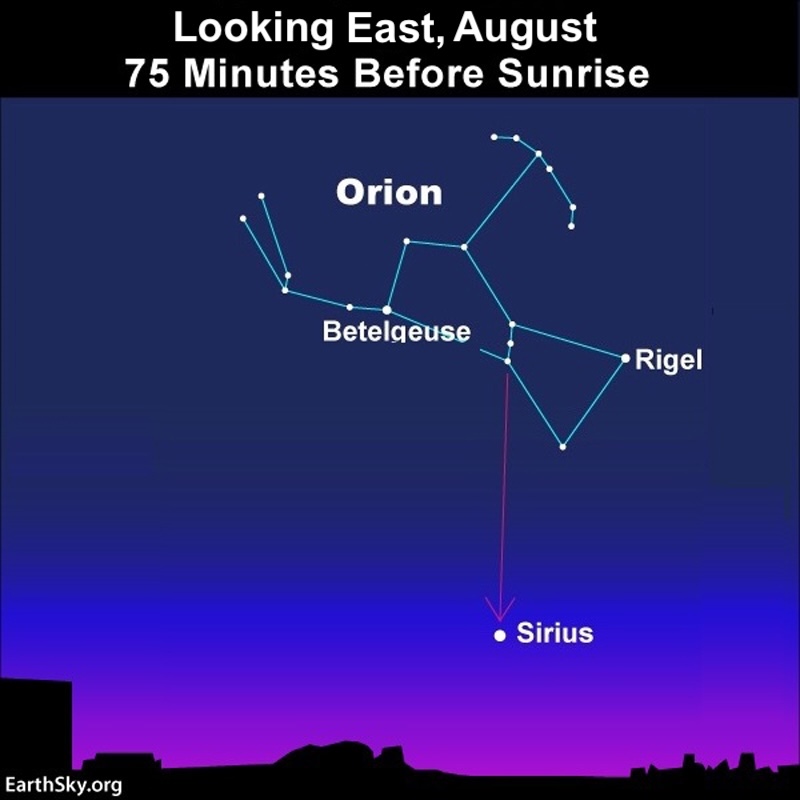
What are the dog days of summer?
You might have heard the hottest days of summer referred to as the “dog days of summer” … but where did this term come from? According to the National Weather Service:
The “dog days of summer” is a phrase used to describe the hot and humid days of summer. It can be traced back thousands of years to the days of the Roman Empire. It refers to the dates from July 3 through August 11, which is 20 days prior and 20 days after the star Sirius rises and falls in conjunction with the sun. Sirius was known as the “Dog Star,” because it is the brightest star in the constellation Canis Major (Large Dog).
So, you can see the term dog days isn’t new. And its origin is based on objects in the sky.
What does Sirius have to do with the hottest days of summer?
The fact is, the name Sirius comes from an ancient Greek word for “scorching” or “glowing.” Plus, Sirius is the brightest star visible from Earth, and it’s visible from both hemispheres. Also, it’s the brightest star in the evening sky during the Northern Hemisphere winter.
Sirius is behind the sun as seen from Earth during the Northern Hemisphere summer. Then, in late summer, it appears in the east before sunrise, near the sun in our sky.
Ancient Egyptians noted that Sirius rose just before the sun each year immediately prior to the annual flooding of the Nile River. Although the floods could bring destruction, they also brought new soil and new life.
Ancient Romans noticed the reappearance of Sirius in the morning sky as well. And they blamed it for the heat in July and August. That’s because Sirius rose each day before sunrise. And then, it traveled across the sky with the sun all day. Thus, early stargazers might have imagined a double-whammy from Sirius and the sun caused the hot weather.
Dog days and Sirius in conjunction with the sun
Since Sirius is in conjunction with the sun on July 23, the dog days of summer centered around then. The dog days of summer fall between July 3 to August 11, and that’s when we have our warmest days in the Northern Hemisphere.
So even though we know why this is the hottest time of the year in the Northern Hemisphere, the legend of the dog days has survived.
Bottom line: The dog days of summer are named for the Dog Star, Sirius – the brightest star in the sky – in the constellation Canis Major the Greater Dog.











